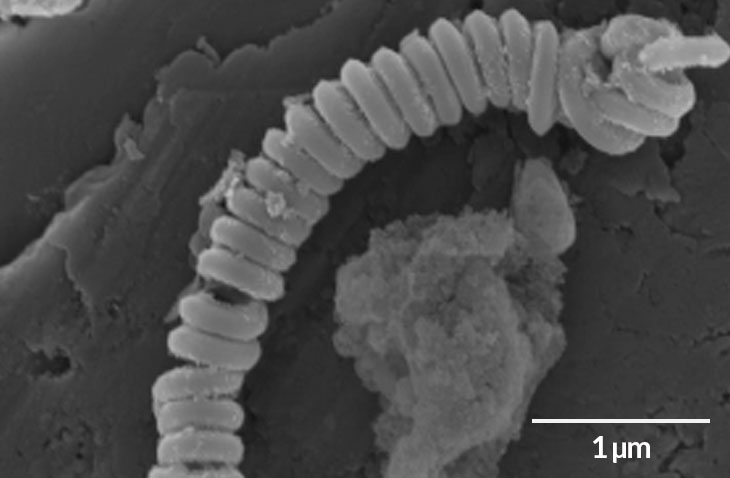
TINY TRASH PATROL Carbon nanotubes that release plastic-eroding chemicals successfully decomposed waterborne microplastic particles of different sizes and shapes (shown in photomicrographs above).
Xiaoguang Duan/Matter 2019
- More than 2 years ago
A new way to decompose microplastics could help clear waterways of these tiny bits of trash, which may pose health risks to people and other animals.
Water treatment plants typically aren’t equipped to filter out microplastics, such as exfoliating beads or flakes broken off larger pieces of garbage, like water bottles (SN: 8/9/14, p. 9). Those pesky particles can take decades to break down naturally, but new nanomaterials that produce plastic-degrading chemicals could break down this detritus much more quickly. In preliminary tests, the nanomaterials cleansed some water samples of about half their microplastic content in mere hours, researchers report online July 31 in Matter.
In the future, water treatment facilities that employ these nanomaterials may not only help prevent new microplastic pollutants from entering the environment, but also potentially remove the particles from polluted waterways.
This water purification method uses nitrogen-coated carbon nanotubes. When mixed with a compound called peroxymonosulfate, the nanotubes generate chemicals known as reactive oxygen species, which crumble microplastics into smaller chemical components. Heating the water speeds up this process. Manganese embedded within each nanotube made the tubes magnetic, allowing them to be fished out of water using magnets for reuse.

Jian Kang, a chemical engineer at Curtin University in Perth, Australia and colleagues tested their technique on 80-milliliter water samples contaminated with microplastic particles. Carbon nanotube treatment in water warmed to 120° Celsius for eight hours reduced the amount of microplastic in the water by about 30 to 50 percent.
Chemical by-products of this microplastic decomposition, such as aldehydes and carboxylic acids, aren’t major environmental hazards, says Long Chen, an environmental engineer at Northeastern University in Boston not involved in the work. Kang’s team, for example, found that exposing green algae to water containing the microplastic by-products for two weeks didn’t harm the algae’s growth.
“There is a whole battery of tests” that could further gauge the environmental risks of this technique, says Bart Koelmans, an environmental scientist at Wageningen University & Research in the Netherlands not involved in the work. Future experiments could investigate effects on other major players in water ecosystems, including phytoplankton, zooplankton and fish.
Using heat to facilitate microplastic breakdown may not be feasible for purification plants that need to process lots of water quickly, Chen says. But Kang and colleagues are now working to refine their nanotubes to break down microplastics more efficiently without the help of high temperatures.
“It’s great to have this option as a tool in a toolbox” to curb microplastic pollution, Koelmans says. “It’s innovative, [and] it’s great chemistry.” But devising new plastic cleanup strategies “should not dismiss us from thinking about what the real problem is, and that’s the [release] of plastic into places where it does not belong,” he says.





